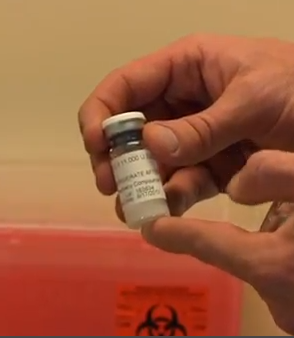Nelson Vergel
Founder, ExcelMale.com
Anabolic steroids and testosterone shut down the body's Hypothalamic-Pituitary-Testicular Axis (HPTA) while people use them and for a few weeks after cessation of these compounds. However, some men's testosterone production does not recover back to baseline values. These men have testosterone deficiency and often have symptoms of hypogonadism (erectile dysfunction, lack of energy, low mood, etc).
Some young men (under 35 years of age) are seeking help after they become hypogonadal after anabolic steroid use. The best post cycle protocol for these patients to normalize HPTA function has not been established but usually include HCG, clomiphene (Clomid), Tamoxifen, etc
This study found that:
1- Men under 50 were more likely to have used anabolic steroids
2- More educated men used anabolic steroids more than less educated men (more disposable income and more research online may be good explanations)
3- Men with fewer children used anabolic steroids in the past more than those with more children (younger age, more disposable income and time to exercise are good explanations)
J Urol. 2013 Dec;190(6):2200-5.
Anabolic steroid induced hypogonadism in young men.
Coward RM, Rajanahally S, Kovac JR, Smith RP, Pastuszak AW, Lipshultz LI.
Abstract
PURPOSE:
The use of anabolic androgenic steroids has not been traditionally discussed in mainstream medicine. With the increased diagnosis of hypogonadism a heterogeneous population of men is now being evaluated. In this larger patient population the existence of anabolic steroid induced hypogonadism, whether transient or permanent, should now be considered.
MATERIALS AND METHODS:
We performed an initial retrospective database analysis of all 6,033 patients who sought treatment for hypogonadism from 2005 to 2010. An anonymous survey was subsequently distributed in 2012 to established patients undergoing testosterone replacement therapy.
RESULTS:
Profound hypogonadism, defined as testosterone 50 ng/dl or less, was identified in 97 men (1.6%) in the large retrospective cohort initially reviewed. The most common etiology was prior anabolic androgenic steroid exposure, which was identified in 42 men (43%). Because of this surprising data, we performed an anonymous followup survey of our current hypogonadal population of 382 men with a mean±SD age of 49.2±13.0 years. This identified 80 patients (20.9%) with a mean age of 40.4±8.4 years who had prior anabolic androgenic steroid exposure. Hypogonadal men younger than 50 years were greater than 10 times more likely to have prior anabolic androgenic steroid exposure than men older than 50 years (OR 10.16, 95% CI 4.90-21.08). Prior anabolic androgenic steroid use significantly correlated negatively with education level (ρ=-0.160, p=0.002) and number of children (ρ=-0.281, p<0.0001).
CONCLUSIONS:
Prior anabolic androgenic steroid use is common in young men who seek treatment for symptomatic hypogonadism and anabolic steroid induced hypogonadism is the most common etiology of profound hypogonadism. These findings suggest that it is necessary to refocus the approach to evaluation and treatment paradigms in young hypogonadal men.
Here is a section of the book "Testosterone: A Man's Guide" about attempts to reset the HPT hormone axis after stopping testosterone (this section applies to men who had normal testosterone before starting anabolic steroids): https://www.excelmale.com/?s=56-How-to-Stop-Testosterone-Safely-and-Possibly-Reset-Your-Hormonal-Ax
Some young men (under 35 years of age) are seeking help after they become hypogonadal after anabolic steroid use. The best post cycle protocol for these patients to normalize HPTA function has not been established but usually include HCG, clomiphene (Clomid), Tamoxifen, etc
This study found that:
1- Men under 50 were more likely to have used anabolic steroids
2- More educated men used anabolic steroids more than less educated men (more disposable income and more research online may be good explanations)
3- Men with fewer children used anabolic steroids in the past more than those with more children (younger age, more disposable income and time to exercise are good explanations)
J Urol. 2013 Dec;190(6):2200-5.
Anabolic steroid induced hypogonadism in young men.
Coward RM, Rajanahally S, Kovac JR, Smith RP, Pastuszak AW, Lipshultz LI.
Abstract
PURPOSE:
The use of anabolic androgenic steroids has not been traditionally discussed in mainstream medicine. With the increased diagnosis of hypogonadism a heterogeneous population of men is now being evaluated. In this larger patient population the existence of anabolic steroid induced hypogonadism, whether transient or permanent, should now be considered.
MATERIALS AND METHODS:
We performed an initial retrospective database analysis of all 6,033 patients who sought treatment for hypogonadism from 2005 to 2010. An anonymous survey was subsequently distributed in 2012 to established patients undergoing testosterone replacement therapy.
RESULTS:
Profound hypogonadism, defined as testosterone 50 ng/dl or less, was identified in 97 men (1.6%) in the large retrospective cohort initially reviewed. The most common etiology was prior anabolic androgenic steroid exposure, which was identified in 42 men (43%). Because of this surprising data, we performed an anonymous followup survey of our current hypogonadal population of 382 men with a mean±SD age of 49.2±13.0 years. This identified 80 patients (20.9%) with a mean age of 40.4±8.4 years who had prior anabolic androgenic steroid exposure. Hypogonadal men younger than 50 years were greater than 10 times more likely to have prior anabolic androgenic steroid exposure than men older than 50 years (OR 10.16, 95% CI 4.90-21.08). Prior anabolic androgenic steroid use significantly correlated negatively with education level (ρ=-0.160, p=0.002) and number of children (ρ=-0.281, p<0.0001).
CONCLUSIONS:
Prior anabolic androgenic steroid use is common in young men who seek treatment for symptomatic hypogonadism and anabolic steroid induced hypogonadism is the most common etiology of profound hypogonadism. These findings suggest that it is necessary to refocus the approach to evaluation and treatment paradigms in young hypogonadal men.
Here is a section of the book "Testosterone: A Man's Guide" about attempts to reset the HPT hormone axis after stopping testosterone (this section applies to men who had normal testosterone before starting anabolic steroids): https://www.excelmale.com/?s=56-How-to-Stop-Testosterone-Safely-and-Possibly-Reset-Your-Hormonal-Ax
Last edited:


















